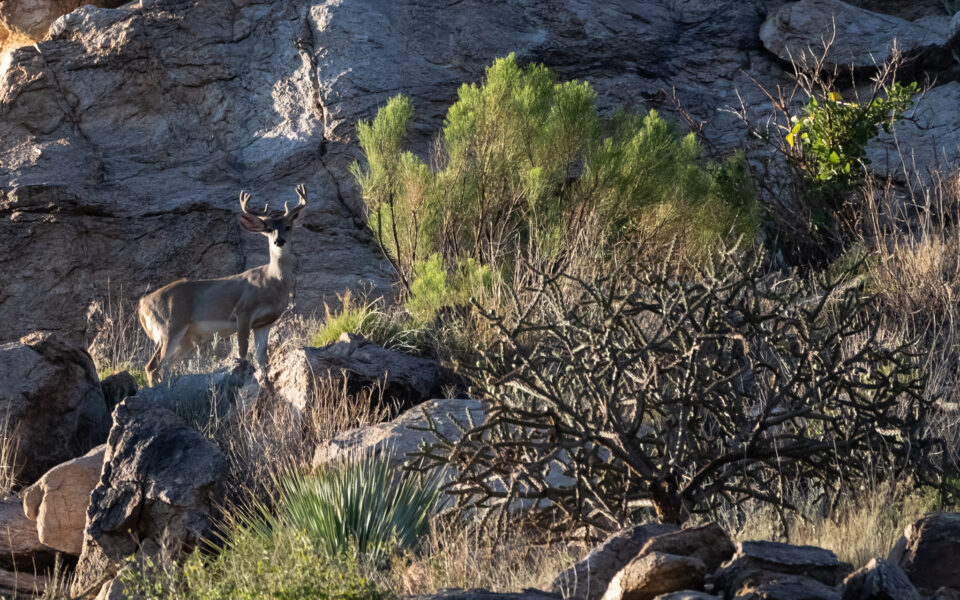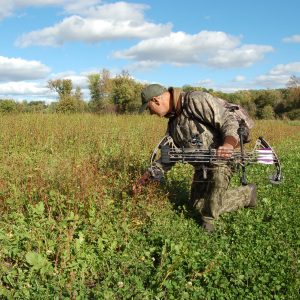A couple decades or so ago, I was preparing for my first wild turkey grand slam when an idea struck me. Turkey, sheep, moose and caribou hunters all have “slams”- why not deer hunters? I commenced to researching and came up with a plan. I lumped the different recognized subspecies of white-tailed deer into eight categories. The rules were simple. To complete the slam, hunters must take one of each. More than a decade later, some enterprising entrepreneurs came up with their own, very similar slam that gained a little notoriety for a while, and then faded away.
The concept still exists for anyone interested, and it is indeed an interesting topic. Most folks think a whitetail is a whitetail, but there is considerable variation within the species across its geographic range – from the behemoths of the frozen north to the diminutive key deer, and everywhere in between. Whether your goal is to one-day collect one of each specimen, or merely to edify yourself on this remarkably adaptable species, below is a comprehensive summary of the diversity of North America’s white-tailed deer.
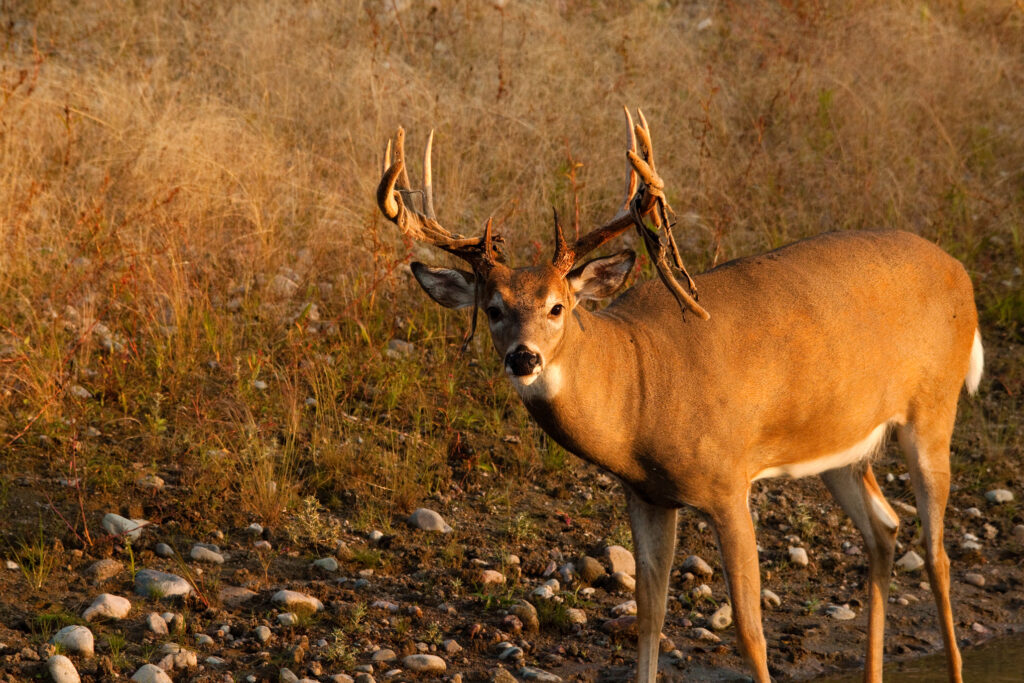
Linda Arndt
Basic Deer Biology
First, a little basic biology lesson. The white-tailed deer’s scientific name is Odocoileus virginianus. Roughly translated, the genus Odocoileus means “hollow tooth”. The species name, virginianus, refers to where the species was first officially recognized. It is easily distinguished from other cervids like elk, moose, caribou, mule deer and black-tailed deer. It’s when we get down to the subspecies level that the lines become blurry.
Taxonomists, who agree amongst themselves about as often as deer hunters do, recognize somewhere between 20 and 40 different subspecies of white-tailed deer, based on both phenotypic (observable characteristics) and genotypic (genetic properties) variation. Differences exist for several reasons. Genetically isolated subspecies may drift, and show greater variation from others over time. Individuals within the same subspecies may exhibit phenotypical plasticity and variation as local populations adapt to habitat, forage or climatic conditions.
Most subspecies are not discrete entities because they are not geographically isolated. Differences between each occur on a continuum, and while those on either end of their range may appear quite different, those in the areas of overlap, where they freely interbreed, they may be virtually indistinguishable. For example, Minnesota alone has three subspecies, according to some taxonomists.
Man has had a hand in muddying the waters as well through translocation. Virginia was restocked with deer from 11 different states. Some subspecies classifications are based on only a few specimens and lack sufficient evaluation to determine how valid they are. Meanwhile, more sophisticated DNA analysis continues to reduce the overall number of subspecies. What follows is a more recent analysis based on Biology and Management of White-tailed Deer, with a few editorial comments.
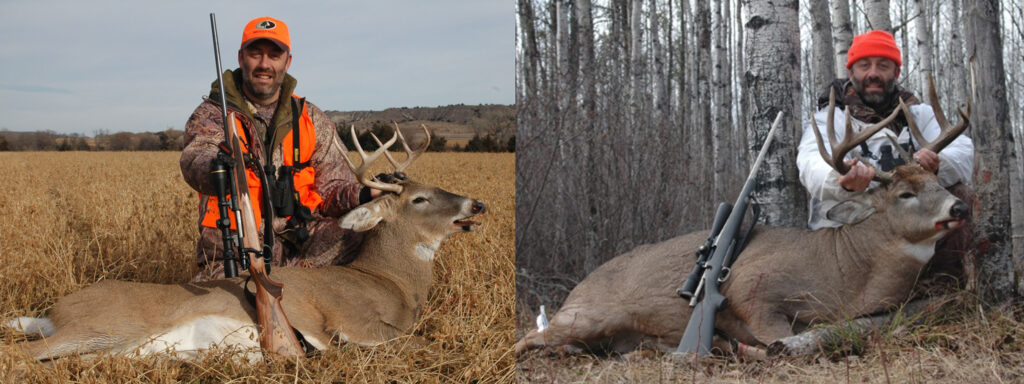
Bob Humphrey
Northeast Whitetail
The northern woodland whitetail (O.v. borealis) is the largest subspecies. It ranges from the Canadian Maritimes west across Ontario, south down the east side of the Mississippi River to southern Missouri, then east to southern Maryland. If you look at a distribution map, you can already see some of the problems with subspecies classification. Deer don’t recognize geographical boundaries and it would be hard to legitimately argue that those standing in southern Illinois, Indiana, Ohio or Pennsylvania are different from those across the border in northern Kentucky, West Virginia, Virginia or Maryland.
Conversely, there is literally a big difference between the average weight of Pennsylvania deer and those from northern Maine, where mature bucks regularly drag the scales down well past the 200-pound mark. Arguably, you could further divide this race geographically by drawing a line roughly through the middle of Maine west, above New Hampshire, New York, Vermont and the Great Lakes, and through about central Minnesota. The deer of Northern Maine, Minnesota and Ontario aren’t like those from southern New England and New York west into Pennsylvania, Ohio, Indiana and Illinois. They’re bigger-bodied, tend to have darker pelage and in general their antlers have more mass and less height/tine length. Again, some of this phenotypic variation could be the result of environment, as deer tend to be darker in humid regions or predominantly coniferous forest areas. Also, habitat is poorer and winters longer reducing the antler growth potential, and where the winters are longer and colder and the snows deeper, only the biggest and strongest survive years of severe winter, which is not necessarily the case for deer in the more southerly borealis range.
Southeast Whitetail
Next on our list is the nominate, virginianus, the Virginia white-tailed deer. Their range covers much, though not the entire southeast from the border with borealis almost to the Gulf. They’re not significantly different from southern borealis deer, though tend to be smaller and have lighter, thinner fur. Both size and color probably vary on a north-south gradient as well.
Along the coast of the South Carolina and Georgia, things start to get more interesting as there are four “island” populations designated as distinct subspecies. While recent genetic analysis has put that status in question, especially as they’re not completely isolated, they do tend to be smaller than mainland deer. All the same, they are the Blackbeard/Sapelo (O.v. nigribarbis), Hilton Head (O.v. hiltonensis), Hunting Island (O.v. venatorius) and Bull Island (O.v. taurinsulae) deer.
Within a relatively narrow strip from southern Louisiana east to southern Georgia and including the Florida panhandle we find the Osceola deer. Here the deer don’t even need to cross state boundaries to be considered a different subspecies. They need only to cross a road, or from one side of the pasture to the other. Nonetheless, taxonomists have determined that a doe in Dothan is distinctly different from a buck in Brundidge.
Confused? It gets worse. As we move down the Florida peninsula into the region that distinguishes the Osceola turkey from the eastern, we find the Florida or “seminolus” whitetail. Once we leave the mainland, we find the Key deer (O.v. clavium), a distinction most taxonomists consider unquestionable as the subspecies is geographically, phenotypically and genetically differentiated. Their population was once down to fewer than 50 but now around 600 occupy 20 or so islands between Johnson and Saddlebunch Keys. Anyone who has driven down the Keys has likely seen these diminutive deer, which have adapted to reduced forage by simply becoming smaller.
South Central Whitetail
Moving north from the Gulf we find the Kansas whitetail (O.v. macrourus) occupying a narrow band of states from central Louisiana north through Arkansas, Missouri, Iowa and southern Minnesota, and just the eastern fringe of states to the west, like Kansas. Those who have hunted these bread basket bucks know they’re big, not quite as big in body at borealis, but the mature ones sport big racks (as do those just over the river in Illinois).
Before we leave the region we have to acknowledge the Avery Island deer (O.v. mcilhennyi), which occupies a narrow band of southern Louisiana and eastern Texas. Though not genetically isolated from Kansas whitetails, their differentiation is probably related to their marshy Delta habitat and warmer climate.
Midwest Whitetail
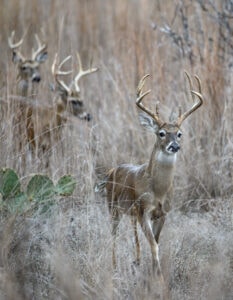
Tim Malek
Texas whitetails (O.v. texanus) occupy the bulk of Midwestern states like Nebraska, Kansas, Oklahoma and yes, Texas. This one’s a bit of a head scratcher as whitetails in Nebraska and Kansas seem more like Kansas whitetails (the subspecies). Oklahoma is a bit of a transition state and Texas is… just different. It’s a big state with very diverse and varying habitat and climate, and a good deal of diversity between deer living in different ecoregions. Folks who have hunted around the State have probably seen a big difference between whitetails in north Texas vs. the Edwards Plateau, the Trans Pecos vs. the Rolling Plains and Hill Country vs. the Piney Woods. One could even invent a Texas slam involving deer from each of the 10 regions. Still, taxonomists consider them all one, at least almost all.
Taxonomists still consider the Carmen Mountains deer (O.v. carminis) as a distinct subspecies as they tend to be smaller and have shorter tines. However, they acknowledge that deer with similar phenotypic characteristics occupy other isolated mountain ranges on both sides of the border. Larger Texas whitetails occur at lower elevations and intergradation occurs in between.
Southwest Whitetail
The southwest is mule deer country but there is one subspecies living there that’s so isolated it clearly deserves its own designation. The Coues deer (O.v. couesi) was named for historian and naturalist Elliott Coues (who pronounced his name “cows,” not “coos.”), and ranges from Mexico north into southern Arizona and New Mexico. Its genetic, phenotypic and geographic differences have earned it the distinction as the only whitetail subspecies with a separate category in the B&C record books, with a measly minimum score requirement of 110 inches.
Western Mountains
Jumping back up north to the Dakotas, Wyoming and Montana we find the Dakota whitetail (O.v. dacotensis). Its range actually stretches way up into southern Manitoba and much of Alberta and Saskatchewan. That seems a bit of a stretch when you consider the pale bodied, and relatively thin-racked bucks of the Dakotas are the same subspecies as the provincial giants. Nonetheless, they are.
Northwest Whitetail
Geography often distinguishes and influences subspecies differences, which likely explains why most whitetails west of the Rocky Mountains are lumped into the Northwest race (O.v. ochrorurus). The distribution map is a little outdated as whitetails now range across much of British Columbia and parts of Washington and Oregon to the Pacific Coast. However, The population occurring at the mouth of the Columbia River on the Washington-Oregon border is, or was considered an isolated and distinct subspecies, the Columbia River whitetail (O.v. leucurus). Another population near Roseburg was once considered a separate subspecies but has since been lumped-in by DNA analysis.

Bob Humphrey
Whitetails Farther South
Moving south into Mexico, and Central and South America the situation becomes even more complex and diverse. Mexico and Central America host 18 different subspecies while Central and South America have 22, some ranging as far south as Chile and Argentina and as far east as Brazil. Few, if any, large mammal species have such a wide geographic distribution, and it’s a testament to the whitetail’s adaptability that the same species can occur from the northern fringe of the frozen boreal forest to the tropical rainforests and plains of South America, and almost everywhere in between.

